Costa Ricans
 | |
 Map of the Costa Rican Diaspora in the World | |
| Total population | |
|---|---|
| Regions with significant populations | |
| 96,903[1] | |
| 11,281[1] | |
| 9,320[1] | |
| 4,505[1] | |
| 4,252[1] | |
| 3,430[1] | |
| 2,097[1] | |
| 1,828[1] | |
| 1,658; 523 (2022)[1] | |
| 1,248[1] | |
| 1,097[1] | |
| 1,061[1] | |
| 1,027[1] | |
| 978[1] | |
| 889[1] | |
| 879[1] | |
| 858[1] | |
| 712[1] | |
| 638[1] | |
| 580[1] | |
| 490[1] | |
| 483[1] | |
| 349[1] | |
| 320[1] | |
| 320[1] | |
| 267[1] | |
| 220[1] | |
| 196[1] | |
| 162[1] | |
| 158[1] | |
| Languages | |
| Religion | |
| PredominantlyRoman Catholic,;[2]Protestant,Buddhistand other religious minorities exist | |
| Related ethnic groups | |
Costa Ricans(Spanish:Costarricenses,colloquially known asTicos) are the citizens of Costa Rica, a multiethnic,[3]Spanish-speaking nation in Central America. Costa Ricans are predominantlyCastizos,other ethnic groups people of Indigenous, European, African and Asian (predominantly Chinese) descent.[4]
By 2018, Costa Rica has a population of 5,000,000 people. The population growth rate between 2005 and 2010 estimated to be 1.5% annually, with a birth rate of 17.8 live births per 1,000 inhabitants and a mortality rate of 4.1 deaths per 1,000 inhabitants. By 2016, the population had increased to about 4.9 million.[5]
Costa Rica was the point where theMesoamericanand South American native cultures met. The northwest of the country, the Nicoya peninsula, was the southernmost point ofNahuatlcultural influence when the Spanish conquerors (conquistadores) came in the 16th century. The central and southern portions of the country hadChibchainfluences. The Atlantic coast, meanwhile, was populated with Jamaican immigrant workers during the 19th century. The country has received immigration fromEurope,Africa,Asia,theAmericasetc. The immigration received from Nicaragua and the rest of Central America during this century can be perceived nowadays in every corner of the country.
History[edit]
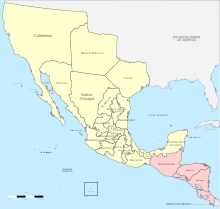
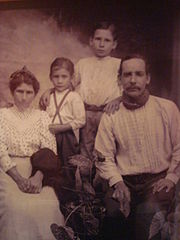
The colonial period began whenChristopher Columbusreached the eastern coast of Costa Rica on hisfourth voyagein 1502. Numerous subsequent Spanish expeditions followed, eventually leading to the first Spanish colony, Villa Bruselas in Costa Rica in 1524.[6]
During most of the colonial period, Costa Rica was the southernmost province of theCaptaincy General of Guatemala,which was nominally part of theViceroyalty of New Spain(i.e.,Mexico), but which in practice operated as a largely autonomous entity within theSpanish Empire.Costa Rica's distance from the capital inGuatemala,its legal prohibition under Spanish law to trade with its southern neighbors inPanama,then part of theViceroyalty of New Granada(i.e.,Colombia), and the lack of resources such asgoldandsilver,made Costa Rica into a poor, isolated, and sparsely inhabited region within the Spanish Empire.[7]Costa Rica was described as "the poorest and most miserable Spanish colony in all America" by a Spanish governor in 1719.[8]
Another important factor behind Costa Rica's poverty was the lack of a significant indigenous population available forforced labor,which meant that most of the Costa Rican settlers had to work on their own land, preventing the establishment of largehaciendas.For all these reasons Costa Rica was by and large unappreciated and overlooked by theSpanish Crownand left to develop on its own. The small landowners' relative poverty, the lack of a large indigenous labor force, the population's ethnic and linguistic homogeneity, and Costa Rica's isolation from the Spanish colonial centers in Mexico and the Andes all contributed to the development of an autonomous and individualistic agrarian society. Even the Governor had to farm his own crops and tend to his own garden due to the poverty that he lived in. Anegalitariantradition also arose. Costa Rica became a "rural democracy" with no oppressedmestizoor indigenous class. It was not long beforeSpanishsettlers turned to the hills, where they found rich volcanic soil and a milderclimatethan that of the lowlands.[9]
Ethnic groups[edit]

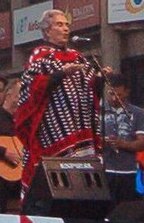




A question on ethnic or racial ancestral origins was previously asked in the 1927 and 1950 census. The most-recent official 2022 census asked people to identify using multiple options including indigenous, Black or Afro-descendant, Mulatto, Chinese,Mestizo,white and other on (Question 7) section IV.[10]
As of 2019[update]most Costa Ricans are primarily of Spanish ancestry with minorities of Nicaraguan, Italian, Portuguese, German, French, British, Irish, Jamaican, Greek, mixed or other Latin American ancestries.
Europeans or white[edit]
European migrants used Costa Rica to get across the isthmus of Central America as well to reach the USA West Coast (California) in the late 19th century and until the 1910s (before thePanama Canalopened).
Many of the first Spanish colonists in Costa Rica may have been Jewish converts toChristianitywho were expelled from Spain in 1492 and fled to colonial backwaters to avoid the Inquisition. According to DNA tests from Ancestry.com and 23&me most of the original Costa Rican population from the Central Valley have around 1-3% Sephardi Jewish DNA.[11]The first sizable group of self-identified Jews immigrated from Poland, beginning in 1929. From the 1930s to the early 1950s, journalistic and official anti-Semitic campaigns fueled harassment of Jews; however, by the 1950s and 1960s, the immigrants won greater acceptance. Most of the 3,500 Costa Rican Jews today are not highly observant, but they remain largely endogamous.[12]
Afro-descendants[edit]
Costa Rica has four small minority groups:Mulattos,Blacks,AmerindiansandAsians.About 8% of the population is of African descent or Mulatto (mix of European and African) who are calledAfro-Costa Ricans,English-speaking descendants of 19th century Afro-Jamaicanimmigrant workers.
In 1873 the Atlantic Railroad imported 653 Chinese indentured laborers, hoping to duplicate the success of rail projects that used Chinese labor in Peru, Cuba, and the United States. Asians represent less than 0.5% of the Costa Rican population.
Indigenous[edit]
There are also over 104,000Native Americanor indigenous inhabitants, representing 2.4% of the population. Most of them live in secluded reservations, distributed among eight ethnic groups: Quitirrisí (in the Central Valley),MatambúorChorotega(Guanacaste),Maleku(northern Alajuela),Bribri(southern Atlantic),Cabécar(Cordillera de Talamanca),Guaymí(southern Costa Rica, along the Panamá border),Boruca(southern Costa Rica) andTérraba(southern Costa Rica).
Today, according to modern DNA test's data the average Costa Rican (with 4 Costa Rican grand-parents) from the Central Valley is around 59% and 75% European, mostly Spanish, Basque or Portuguese, with around 15% - 35% Native American DNA from Central America or Colombia/Venezuela and 1-10% African particularly from Cameroon, Senegal or Congo on average. Native American from other regions in the Americas, European Jewish, Italian, Irish, Asian/Middle Eastern DNA can also be traced in part of the current Costa Rican population. Values vary drastically per region.
Immigration[edit]
A considerable portion of the Costa Rican population is made up ofNicaraguans.[13]There is also a number ofColombianrefugees. Moreover, Costa Rica took in many refugees from a range of other Latin American countries fleeing civil wars and dictatorships during the 1970s and 80s – notably fromEl Salvador,Chile,Cubaand recently fromVenezuela.
Currently immigrants represent 15% of the Costa Rican population, the largest in Central America and the Caribbean. By 2019 the largest Immigrant Diasporas inCosta Ricaare people from:Nicaragua,Colombia,Honduras,El Salvador,Venezuela,and theUnited States.
Population[edit]
Approximately 40% live in rural areas and 60% in urban areas. The rate of urbanization estimated for the period 2005–2010 is 2.3% per annum,[14]one of the highest amongdeveloping countries.
| Province | Province population | City | City population |
|---|---|---|---|
| San Jose Province | 1,345,750 | San Jose de Costa Rica | 350,535 |
| Alajuela Province | 716,286 | Alajuela | 46,554 |
| Cartago Province | 432,395 | Cartago | 156,600 |
| Puntarenas Province | 357,483 | Puntarenas | 102,504 |
| Heredia Province | 354,732 | Heredia | 42,600 |
| Limon Province | 339,395 | Puerto Limon | 105,000 |
| Guanacaste Province | 264,238 | Liberia | 98,751 |
Languages[edit]

The primary language spoken in Costa Rica isCosta Rican Spanish,one of the main particularities of the Costa Rica Spanish is the usage of the second person singular pronounvos (calledvoseo) orustedinstead oftú.Some native languages are still spoken in indigenous reservations. The most numerically important are the Bribri, Maléku, Cabécar and Ngäbere languages, some of which have several thousand speakers in Costa Rica – others a few hundred. Some languages, such as Teribe and Boruca, have fewer than a thousand speakers. A Creole-English language, Jamaican patois (also known as Mekatelyu), is spoken along the Caribbean coast. About 10.7% of Costa Rica's adult population (18 or older) also speaks English, 0.7% French, and 0.3% speaks Portuguese or German as a second language. Mennonite immigrants to the country also speak Plautdietsch.
Religion[edit]
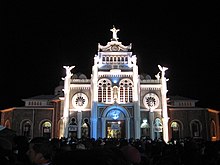
Christianity is the predominant religion, and Roman Catholicism is the officialstate religionaccording to the 1949 Constitution, which at the same time guarantees freedom of religion.[15]
According to the most recent nationwide survey of religion, conducted in 2007 by the University of Costa Rica, 70.5% of Costa Ricans areRoman Catholics,44.9% of the population are practicing Catholics, 13.8% areevangelical Protestants,11.3% report they do not have a religion, and 4.3% belonged to another.
Because of the recent small but continuous immigration from Asia (including West Asia/the Middle East), other religions have grown, the most popular beingBuddhism(because of a growingHan Chinesecommunity of 40,000), and smaller numbers of followers of theHindu,Jewish, Muslim andBaháʼí Faiths.
The Sinagoga Shaarei Zion synagogue[16]is nearLa Sabana Metropolitan ParkinSan José.Several homes in the neighborhood east of the park display theStar of Davidand other Jewish symbols.[17]
The Church of Jesus Christ of Latter-day Saints(Mormons) claim more than 35,000 members, and has a temple inSan Josethat served as a regional worship center for Costa Rica, Panama, Nicaragua, and Honduras.[18]However, they represent less than one percent of the population.[19][20]
Emigration and immigration[edit]
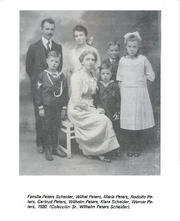
Costa Rica's emigration is the smallest in theCaribbean Basinand is among the smallest in theAmericas.By 2015 about just 133,185 (2,77%) of the country's people live in another country as immigrants. The main destination countries are theUnited States(85,924),Nicaragua(10,772),Panama(7,760),Canada(5,039),Spain(3,339),Mexico(2,464),Germany(1,891),Italy(1,508),Guatemala(1,162) andVenezuela(1,127).[21]In 2005, there were 127,061 Costa Ricans living in another country as immigrants.Remittanceswere $513,000,000 in 2006 and they represented 2.3% of the country's GDP.
Costa Rica's immigration is among the largest in the Caribbean Basin. Immigrants in Costa Rica represent about 10.2% of the Costa Rican population. The main countries of origin areNicaragua,Colombia,United StatesandEl Salvador.In 2005, there were 440,957 people in the country living as immigrants. Outward Remittances were $246,000,000 in 2006.
See also[edit]
- Costa Rica
- Culture of Costa Rica
- Afro-Costa Ricans
- Italian Costa Ricans
- Chinese people in Costa Rica
- Costa Rican Americans
- Indigenous peoples of Costa Rica
- Criollo people
- Hispanics
References[edit]
- ^abcdefghijklmnopqrstuvwxyzaaabacad"Costa Rica - Emigrantes totales".expansion.com/ Datosmacro.com(in Spanish).
- ^"Las religiones en tiempos del Papa Francisco"(in Spanish). Latinobarómetro. April 2014. p. 6. Archived fromthe original(PDF)on 10 May 2015.Retrieved4 April2015.
- ^"Lawmakers vote to define Costa Rica as a multiethnic, plurinational country".The Tico Times.28 August 2014.Retrieved29 March2015.
- ^Costa Rica es multirracial, último censo lo pone en evidencia
- ^"Capital Facts for San José, Costa Rica".20 July 2017. Archived fromthe originalon 13 April 2020.Retrieved6 August2017.
- ^"Costa Rica History".Archived fromthe originalon 2013-05-01.Retrieved2016-02-05.
- ^"A Brief History of Costa Rica: Colonial Times".Archived fromthe originalon September 22, 2007.Retrieved2007-12-21.
- ^Shafer, D. Michael (1994).Winners and losers: how sectors shape the developmental prospects of states.Ithaca, N.Y.: Cornell University Press.ISBN0-8014-8188-0.
- ^"Costa Rica – Cartago".Costarica.com. 2009-05-22. Archived fromthe originalon 2008-02-22.Retrieved2010-06-26.
- ^"INEC Cuestionario Censo 2022"(PDF).INEC.2022.Retrieved6 April2023.
- ^"The Jewish Community in Costa Rica".Retrieved29 March2015.
- ^"Culture of Costa Rica - history, people, women, beliefs, food, customs, family, social, marriage".Retrieved29 March2015.
- ^www.state.govBackground Note: Costa Rica – People
- ^Central Intelligence Agency (2011)."Costa Rica".The World Factbook.Langley, Virginia: Central Intelligence Agency.Retrieved2011-10-04.
- ^"International Religious Freedom Report for 2017".www.state.gov.2018.Retrieved29 December2018.
- ^Centro Israelita de Costa Rica, Comunidad Judía de Costa Rica,Costa Rican Jewish Community
- ^"Jewish Community in Costa Rica".Jcpa.org.Retrieved2010-06-26.
- ^Costa RicaArchived2010-08-25 at theWayback Machine.LDS Newsroom. Retrieved 2008-12-13.
- ^"San José Costa Rica LDS (Mormon) Temple".Ldschurchtemples.com.Retrieved2010-06-26.
- ^"List of LDS (Mormon) temples in Central America and the Caribbean".Lds.org.Retrieved2010-06-26.
- ^Costa Rica - Emigrantes totales(in spanish) Según los últimos datos publicados Costa Rica tiene 133.185 emigrantes, lo que supone un 2,77% de la población de Costa Rica. Si miramos el ranking de emigrantes vemos que tiene un porcentaje de emigrantes medio, ya que está en el puesto 44º de los 195 del ranking de emigrantes.
